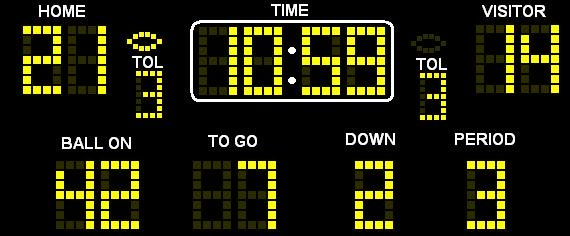Did you know that in a three-hour football game, the ball is only in play about 11 minutes? That’s less than the time it takes to boil an egg. During the other 174 minutes of a typical television broadcast, the fans are waiting around for the next snap of the ball! (Wall Street Journal study)
However, as fans, we stay motivated because of the abundance of informational feedback we receive between plays. Our attention is held by replays and game statistics flashed on the television screen. We hear color commentary from announcers, see highlights of other games going on, and learn about the personal lives of players and coaches.
When the ball is in play, we are glued to the action. We get visual feedback from yard markers that indicate our team’s forward progress. We know exactly how far it is for a first down and how many yards to the goal line. The scoreboard constantly reminds us of how our team is performing compared to the rival team. We cheer and boo to make sure the players, coaches and referees get feedback about their performance.
Players and fans receive non-stop feedback throughout the game!
 Feedback
Feedback
Feedback Boosts Performance
Here are three simple things you can do to apply the principle of feedback to the business systems and processes in your operation:
- Team members should always know how they are performing in relation to the goal.
- System feedback and scorekeeping should be simple and self-administered. Employees should not have to depend on a supervisor to tell them how well they are doing.
- To improve performance, increase the frequency of the feedback.
Good employees love to get feedback, whether it comes in the form of vital information, numbers, and statistics, praise, encouragement, recognition, financial incentives, or even high-fives. Positive feedback is far more effective over time than negative. If you find yourself giving negative feedback often, you likely need to improve the business system or get the right people in the job assignments.
Feedback motivates, and is an essential part of high-performance business systems and processes!
Apply this Powerful Principle
Take a close look at your core systems and processes. Do people frequently learn how they are performing in relation to the goal? Do they know when they’ve had an exceptional day or an off-day? Do they continually strive to improve the system and themselves—to better their best? Do you reward employees for a job well done?
Remember: to improve performance, increase the frequency of feedback.







